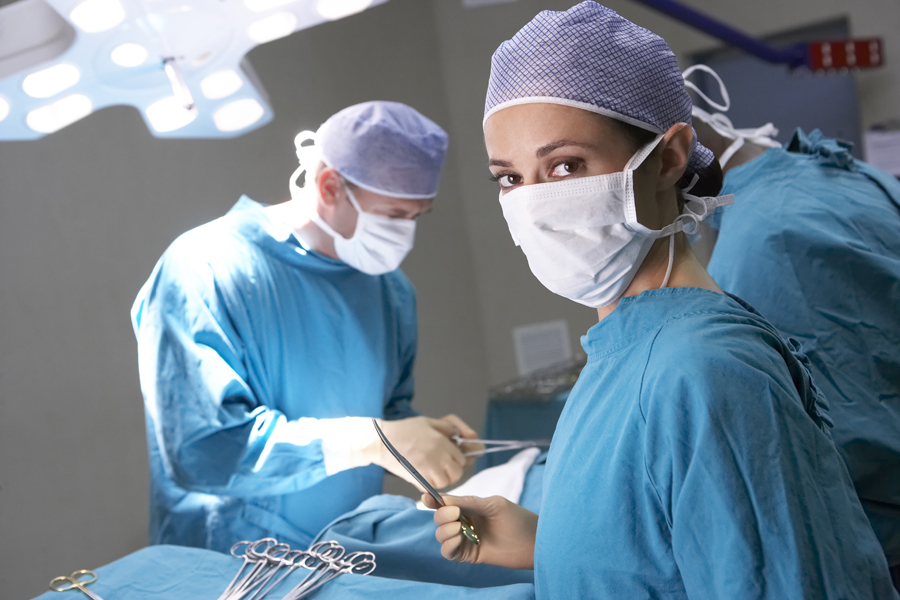Ossur, an Icelandic based prosthetics development company is set to announce the beginning of clinical trials for its Proprio foot, a new kind of brain controlled prosthetic ankle and foot. Instead of trying to connect the device to nerves, the robotic limb uses sensors to detect nerve signals in muscles near the point where the limb was removed. The limb then analyses those signals and converts them to movement in real time, which is reportedly very close to that of natural limbs.
Category: HEALTHCARE/MEDICAL
Obesity and weight loss change splicing pattern of obesity and type 2 diabetes genes
Alternative splicing of obesity and type 2 diabetes related genes may contribute to the pathophysiology of obesity, according to research from the University of Eastern Finland. Obesity leads to changes in the splicing pattern of metabolically relevant genes such as TCF7L2 and INSR, resulting in impaired insulin action. However, weight loss, induced by either obesity surgery or a very low-calorie diet, reverses these changes. The findings, presented by Dorota Kaminska, MSc, in her doctoral dissertation, increase our understanding of splicing dysregulations in obesity and can result in a new, more targeted treatment and more accurate diagnostics of metabolic disorders.
Targeted drug delivery could transform therapies
A world expert in biomedical engineering will today argue that medical science has been focusing on the wrong problem for 30 years. Instead of inventing new drugs, making better use of the drugs we already have available by targeting them to the affected part of the body could hold the answer to tackling many of today’s life threatening diseases.
Pilot clinical trial finds injected immune cells safe in multiple myeloma patients
Thirteen of 22 patients experienced some reductions in cancerous white blood cellsThis image shows marrow-infiltrating lymphocytes in cell culture. Credit: Credit: Kimberly Noonan, Ph.D.
Latest U.S. Census Data: Fastest Growing Cities Are In The West And South
The latest estimates from the U.S. Census Bureau show the 15 cities with the biggest population increases were in the South and West — with two exceptions: New York City and Columbus, Ohio.» E-Mail This
How to Manage High Medical Bills
Many Americans lack the savings necessary to pay for sizable health care costs. Here’s a look at some helpful strategies to handle these payments.
Researchers identify 763 proteins in human aqueous humor that nourish the cornea and the lens
Researchers conducting a comprehensive proteomics analysis of human aqueous humor samples identified 763 proteins – including 386 proteins detected for the first time – in this clear fluid that helps maintain pressure in the eye and nourishes the cornea and the lens.
‘Green chemistry’ to quantify the components of cosmetics
There are 10,000 components that can be used to make cosmetics. These components have to be monitored to guarantee consumer safety. Scientists have now developed three ‘green’ analytical methods to simultaneously analyze various components used in cosmetics. In these methods very little solvent is used and very little residue is produced in comparison with other analytical techniques.
Hep C irony renews questions of public confidence
In a nice touch of media irony, on the very day that Gilead Sciences, Inc. purchased a full page ad in the New York Times (web version here) talking about “new resources” available to fight Hepatitis C, a story by Andrew Pollack started with this lede:Activists in several countries are seeking to void patents on the blockbuster hepatitis C drug Sovaldi, saying that the price being sought by the manufacturer, Gilead Sciences, was prohibitive.The Initiative for Medicines, Access and Knowledge, a legal group in New York, is expected to announce Wednesday that it has filed challenges in Argentina, Brazil, China, Russia and Ukraine. In all those countries except China, the organization is being joined by local patient advocacy groups.The actions are a sign that
Chipping Away At The Mystery Of The Oldest Tools Ever Found
How do you prove a rock was actively shaped and used as a tool more than 3 million years ago? Scientists found a kit of more than 140 artifacts in one spot and say the tools’ crafters were pre-human.» E-Mail This
New hospital ratings evaluate delivery of “typical care”
The Internet has made it easier to become an educated consumer. At the touch of a button, you can find reviews of thousands of products and services — even health services — from consumer groups and fellow customers. It’s no surprise that many people count on these reviews and rankings before visiting a hospital. For the past 25 years, US News and World Report has been listing the “best hospitals” in the United States. In a Viewpoint article in this week’s JAMA, the magazine’s top health analysts describe how they are expanding and changing the way they rate hospitals. Common procedures, conditions will be included Since 1990, US News has analyzed information from about 2,000 large hospitals in the United States and ranked the top 50 in




